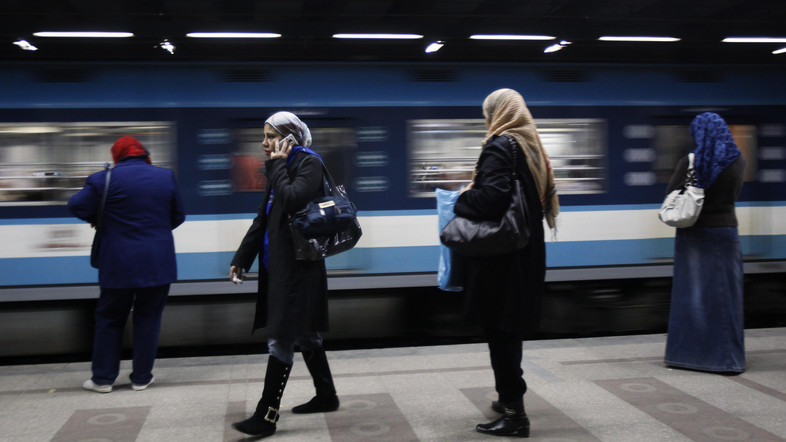
Forever concerned that we might be under-dressed to walk the streets in Egypt, we were taken aback when the club bouncer at one of Cairo’s “it” spots pointed to our hijabi friend and told us that there was a “no hat policy”.
There are, of course, a number of issues here, though once we’d established that the headscarf isn’t really a “hat”, he admitted there was indeed a “no headscarf” policy as well.
A quick google search indicates that this is in fact a common problem, not only for hijabi women in Cairo but also at venues along the north coast, Sharm el Sheikh and Hurghada. This is despite the fact that 90 percent of Egypt’s 80-million population are Muslim, and that 90 percent of those Muslim women wear the headscarf.

The reason behind the policy wasn’t explained to us and we were left to assume that it is a misguided attempt to “protect” hijabis from the inevitable debauchery on the inside. On reflection, however, it seems more likely that the “no hats” policy is driven by something more sinister.
It seems, in part, to be an issue of image; in such venues, where Egyptian and foreign women dress more in line with the west, veiled women may be deemed out of sync. The argument of those venues would be that guests inside feel uncomfortable with the presence of veiled women, and judged for drinking alcohol and smoking alongside those who are overtly religious and must surely consider all of this to be haram.

Whether religion and hedonism can coexist is probably a debate for another day, but who is anyone to assume what another person is thinking or, indeed, to judge them for how they choose to follow their religion?
It has even been suggested in the Egypt Independent that this is a sort of class war. Unofficial “hijab-free zones” are, apparently, a direct result of the alarm felt by an increasing number of upper-class Egyptians at the spread of veiling in Egypt; a hangover perhaps from “the old days when the hijab was considered low-class” by Egyptian elites.
Of course, it makes financial sense for a club owner to impose a dress code if this boosts the exclusivity of the club and thus allows them to charge greater fees. I also wouldn’t want to suggest that dress codes should be thrown out of the window altogether; we can all agree that the vast majority of nightclubs are empty rooms with a bar, and it is the people inside that provide the decor.
However, I wonder what might happen if someone, regardless of gender, were to be turned away from a venue in London based on religious dress. In the UK, dress codes are legal as long as they don’t discriminate based on gender, ethnicity or disability. In Egypt, the minister for Tourism announced in 2015 that any venue that discriminates against the veil will be “shut down”, and so it seems that some venues in Egypt are treading on thin ice.
Nevertheless, even the former President of Egypt’s National Council for Women, Mervat Tallawy, suggested that “an establishment that prevents hijab-wearing women is just like any other that would ban a man for not wearing a suit”.
It seems to me that this misses the point entirely. The problem is not that there is a dress code. It’s not even that there is a dress code that discriminates against Muslims, because it doesn’t.
Plenty of Muslim men enter these venues without any problems. It is that there is a dress code that discriminates against women. Why may a Muslim man just as devout as his female counterpart enter a club? Because his status as a Muslim is less overt, or because Muslim men are culturally permitted to engage publicly in an endless list of activities that are traditionally forbidden or frowned up for Egyptian women; smoking, wearing skinny jeans and laughing in public to name a few.
The bottom line is this: the choice to enter certain venues is denied to hijabis not because the owner has implemented a “no hats” policy, but because society has already decided for her.







Comments (2)
[…] them as ‘extreme’ or ‘foolish’, or in public places such as swimming pools, clubs and […]
[…] Source link […]